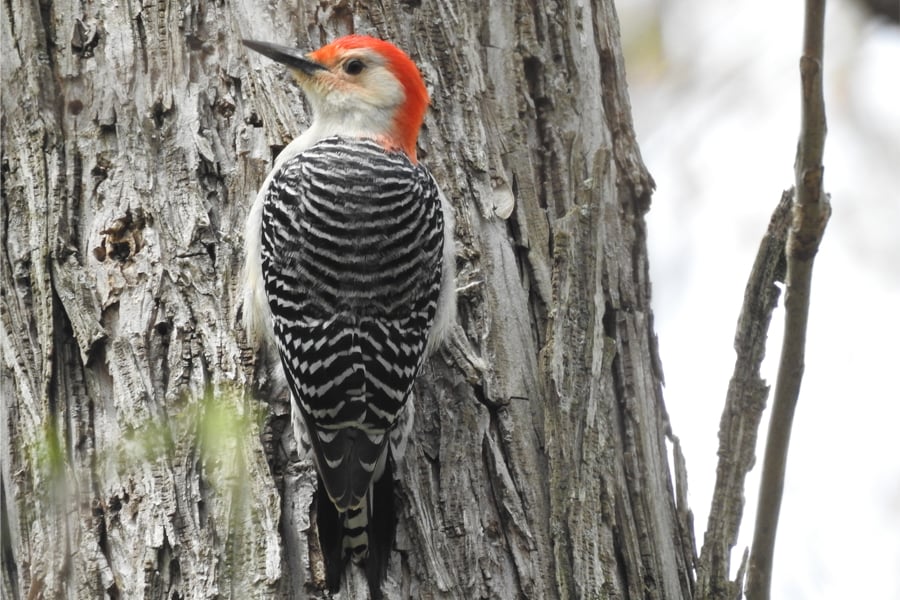Living With Woodpeckers
This page provides problem-solving advice and ways you can make your yard or home less attractive to woodpeckers in the first place.

A Woodpecker in Your House
How to Make Your Home Less Attractive
Woodpeckers peck and drum for different reasons. Here are ways you can keep them from doing so on your house.
Feeding
Woodpeckers find insects by listening for the sounds they make inside wood. They can’t tell the difference between a burrowing insect and buzzing electricity, though, so they may drill holes in siding if they hear electricity traveling through conduit in the walls of your house.
- If woodpeckers are drilling siding because it’s infested with insects, you need to remove the insects. You may wish to consult a pest-control specialist.
- If they’re drilling because they hear electricity running through the walls, cover the wall with a blanket or foam rubber to muffle the noise, and they may stop.
Drumming
When a woodpecker persistently hammers at an area in the spring but doesn’t make a cavity, it’s likely “drumming” to attract a mate or announce its territory. It usually chooses something that makes a loud, resonating sound, such as a metal chimney cap, and will visit the site regularly. If you can cover the object with a blanket or foam rubber to muffle the sound, the bird may stop.
Cavity Building
Woodpeckers may try to build nesting cavities in loose knots in cedar siding, sometimes starting a hole and then abandoning it to start another. If you can discourage a woodpecker before it finishes a cavity, it may relocate, but it also may return next year. It’s an uncommon, seasonal, temporary behavior but one that’s difficult to control. A combination of scare tactics and prompt repair of the excavation area may help.
- To frighten birds, hang items that blow in the wind or shine in the sun, such as mylar ribbon, windsocks or aluminum foil strips. “Eye-spot balloons” — beach balls with circles painted on them to represent large, predatorlike eyes — may also be effective.
- Fill shallow excavated holes with caulk or wood filler as soon as they’re created. Fill larger holes and loose knots with wooden plugs or hardware cloth and caulk.
- Hang a nesting box directly on the building or on a post in front of the problem area. The bird may use it instead of building its own.
Perching - To block access to a favorite perching spot, hang a sheet or a plastic tarp over the surface.
What You Should Never Do
All native birds, a category that includes woodpeckers, are protected by the 1918 Migratory Bird Treaty Act. It is illegal to:
- Possess birds, dead or alive, or their nesting materials, eggs, feathers or bones without proper permits from the U.S. Fish and Wildlife Service and the state of Illinois.
- Harm or kill a native bird.
- Remove or destroy nesting material once a bird has laid an egg.
- Move young from a nest.
The law does not protect nonnative pigeons (rock doves), English house sparrows or European starlings.
Public Health Concerns
Birds in DuPage County can carry West Nile virus, but people who acquire the virus do so after being bitten by an infected mosquito and not by coming in direct or indirect contact with an infected bird.